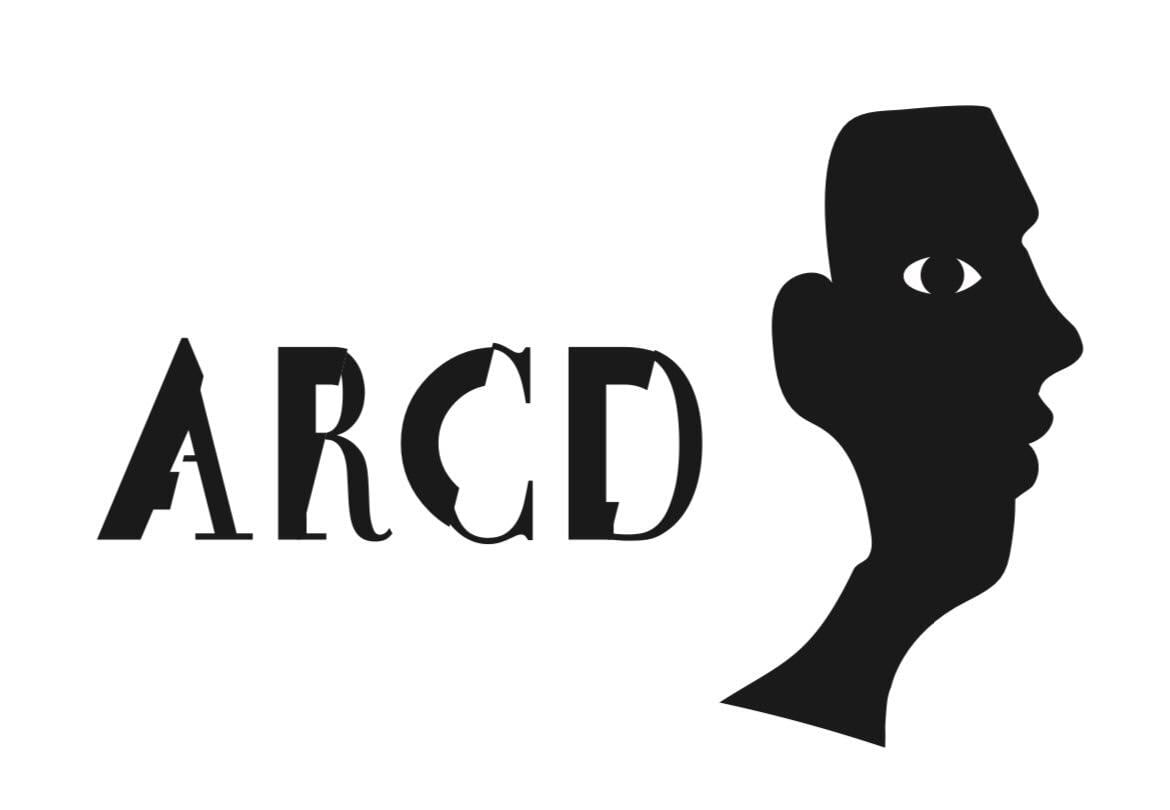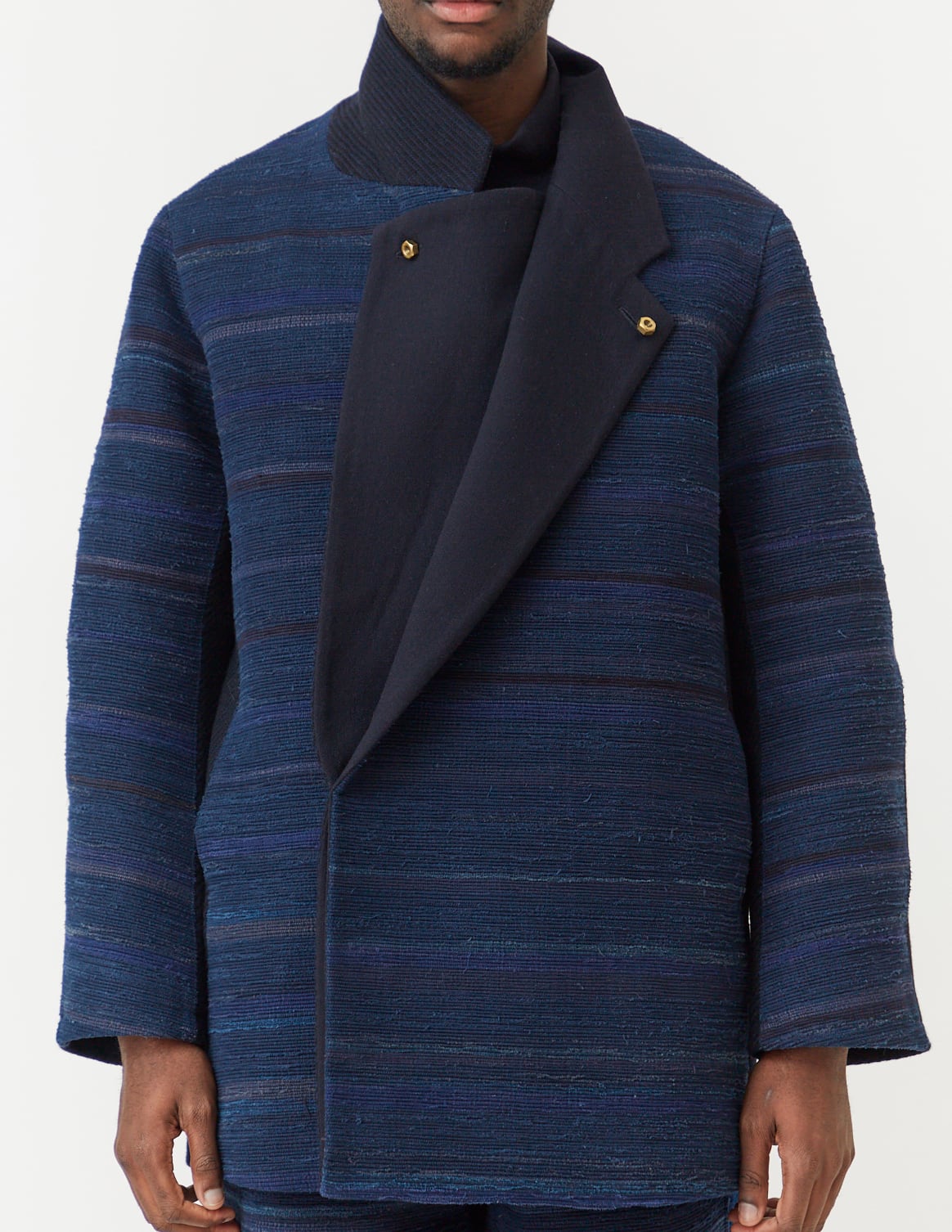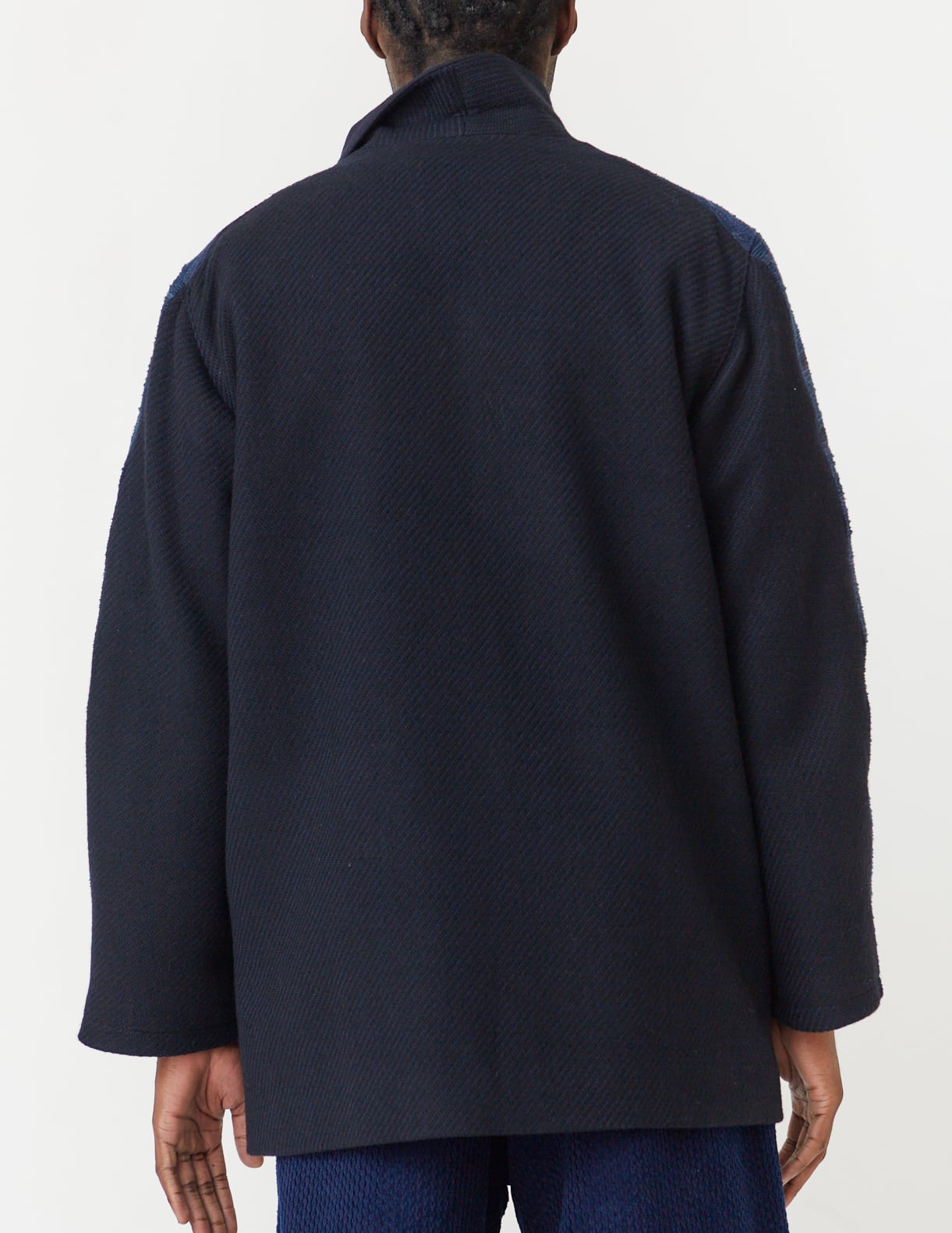NOBNAGA Paris / JAPAN ''Sakiori'' 裂織り DOUBLE OVERLAP LONG JACKET (221090)
¥610,500
SOLD OUT
【Description】
今季のコレクションでは西洋の鎧や日本の軍服を着想源にしながら、【対比】をテーマにしています。鎧の、一切の際が無いように体に沿わせた構築的なデザインを再現するために前身頃・前袖には厚手の生地を使用しながら、後身頃・後袖には服としての機能性を持たせるための対照的な薄手の生地を使用。ネイビーとカーキをコレクションの基調色としながらも、前後のパーツは配色にせず同系色で統一することにより、他の対比は微細なものに抑えながら、素材感における対比を強調させるようにしています。また対比は素材だけではなくシルエットとデザインの上でも行われ、正面からと背面からではその姿は一変、すれ違い様に雰囲気・表情の相違が明らかになる世界観のコレクションとなっています。
NOBNAGA parisの作る究極的なアートピース。構築的なロングジャケットが登場しました。ダブルの打ち合わせにオーバーラップ(2重)になったフロントが特徴的。ボタンをかける位置で様々な着方ができ、通常のジャケットやスタンドカラーとしても使用できます。ボタンはフランス産の燻しのかかった金のヴィンテージボタン。生地には青森県南部地方で江戸時代に生まれた、再利用の精神に基づく伝統工芸の「裂織り」を使用。古布を細かく裂いて糸状いして再び織り直すことで、丈夫で温かみのある生地となります。また、総裏仕様となるので、防寒性にも非常に優れており、前合せは比翼ボタン。丁度手が入れやすい位置に設置したサイドスラッシュポケットも機能的です。パタンナーである松下氏が追求したのはデザインはもちろんのこと、着心地の良さも考慮したパターン。ややゆとりがあり、内側にはローゲージのニットまで着用可能。ジャケットと言うよりは生地の肉感自体もコートの感覚になります。
ー南部裂織ー
前身頃の、鎧のような構築感とシルエットを支えるための厚手の生地としてコレクションを象徴するのは、青森県の南部地方で江戸時代から伝わる伝統工芸品の【南部裂織】。当時の北国では寒さのために貴重だった木綿は、使い古された後には裂いて糸を経糸にして織り込まれ、夜着やこたつ掛けとして再利用されていました。江戸時代に青森に運ばれるようになった木綿の多くは藍染めの古手木綿だったこと、また使い古した生地は合いが多様であったことにより、自然な他のグラデーションを持たせることに繋がりました。裂識は、生地を裂きなから織るか生地を予め裂いておいて織るかの違いで織りあげるのに多少の時間は生じても、一日で1m織るのが限界という非常に時間と手間のかかる工法です。織物の設計から完成までは、10もの工程を経る必要があります。また南部裂織の特徴である藍染の古布は今日では大変貴重な上、生地をまず解き、値落ちを防ぐために何度も洗い、干してアイロンをかけてから初めて裂くことができるため、織り始めるまでにも多くの手間と時間が必要になります。古布による柔らな手触り、自然な色のさめ方のグラデーション、裂いた布による幅と素材の差異が機械で織ったもののようには均一にはならいために人の気持ちを和らけるという「ゆらぎ」が生まれる、という特徴を持った生地が南部裂織です。
This season's collection is inspired by Western armor and Japanese military uniforms, with a theme of "contrast." To recreate the seamless, structural design of armor, which conforms to the body, thick fabrics are used for the front and front sleeves, while contrasting lighter fabrics are used for the back and back sleeves to maintain the garment's functionality. While navy and khaki are the collection's primary colors, the front and back are unified in similar colors, emphasizing the contrast in texture while minimizing other contrasts. Contrast is not only expressed in materials, but also in silhouette and design. The garments appear completely different from the front and back, revealing a distinct atmosphere and expression as they move from one to the other.
NOBNAGA Paris presents the ultimate art piece. Introducing this structural long jacket. Featuring a double-breasted, overlapping front, it can be worn in a variety of ways, depending on the buttoning position, and can be worn as a standard jacket or a stand-collar jacket. The buttons are vintage, smoked gold from France. The fabric is crafted from "Sakiori," a traditional craft based on the spirit of reuse that originated in the southern region of Aomori Prefecture during the Edo period. By tearing old cloth into small pieces, spinning it into threads, and then weaving it back together, it becomes a durable and warm fabric. It's also fully lined for exceptional cold protection. The front closure features a concealed button closure. Side slash pockets, positioned just right for easy access, add functionality. Patternmaker Matsushita focused on comfort as well as design. The slightly roomy design allows for even a low-gauge knit to be worn underneath. The texture of the fabric itself gives it the feel of a coat, rather than a jacket.
-Nambu Sakiori-
The collection's signature fabric, the armor-like construction of the front and the thick fabric supporting the silhouette, is Nanbu Sakiori, a traditional craft passed down in the southern region of Aomori Prefecture since the Edo period. At the time, cotton was a valuable commodity in the northern region due to its cold climate. After wear, it was torn and the threads were woven into the warp to be reused as nightwear and kotatsu covers. Much of the cotton shipped to Aomori during the Edo period was secondhand indigo-dyed cotton, and the diverse textures of worn-out fabrics led to the creation of natural gradations. While the weaving process differs depending on whether the fabric is torn or pre-ripped, the process is extremely time-consuming and labor-intensive, with a maximum weaving speed of one meter per day. From design to completion, a textile requires as many as ten steps. Furthermore, the indigo-dyed vintage fabric characteristic of Nanbu Sakiori is highly prized today. The fabric must first be unraveled, washed multiple times to prevent value loss, dried, and ironed before it can be torn, necessitating significant time and effort before it can be weaved. Nanbu Sakiori boasts the soft texture of vintage fabric, the natural gradations of color fade, and the variations in width and texture due to the torn fabric, which are not uniform like machine-woven fabrics, resulting in a soothing "fluctuation."
Made in Japan
【Fabric】
(Front)
Cloth 100%
(Back/Left lapel/ Right facing/Collar stand)
Wool 100%
(Lining)
Rayon 57%
Cotton 43%
(Upper collar/ Left facing/ Inside Left lapel)
Wool 46%
Cotton 38%
Acrylic 8%
Polyester 8%
【Color】
Indigo
【Size】
Size ML
着丈/FrontLength/80cm
肩幅/Shoulder/48cm
胸囲/Bust/121cm
ウエスト/Waist/117cm
袖丈/SleeveLength/62,5cm

























